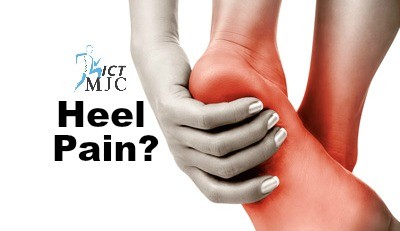Heel Pain?
Heel pain is a common occurrence for everyday individuals to elite long distance runners. There are many reasons for this, such as: landing positions, foot strike patterns, shoe types, or lack of strength/mobility/endurance. The list of associated causes for heel pain is broad. This blog will cover some import factors and shopping tips that you can take advantage of the next time you experience heel pain.
The Heel Pad
The heel pad is an incredible structure consisting of: an inner chamber designed to absorb shock, and an outer chamber that serves as a protective cup for the inner chamber. These chambers are so unique there is nothing else like them in the entire body. They are designed in a way to allow maximum compression with minimal deformation. The ultimate purpose for the heel pad is to absorb shock, which it does better than any man-made product. It is twice as effective as the leading, shock absorbing insole on the market. Even though it is an exceptional structure, nothing resists time forever.
Heel-Toe Drop
Heel striking is the natural gait pattern associated with walking. However, striking position may change to a more forward contact point -midfoot or forefoot- as speeds increase. Shoe companies are crafty with experimenting in a variety of features. One feature in particular is the heel-toe drop. Heel-toe drop refers to the millimeter (mm) drop from the heel down to the toes. A traditional running shoe will have a 10-13mm heel-toe drop. Shod walking places cushion underneath the heel pad in order to reduce impact forces. An increased heel-toe drop provides more cushion under the heel than a minimalist shoe. However, companies like Hoka are starting to decrease their shoes to a 3-6 mm heel-toe drop. The idea of decreasing the heel-toe drop is to replicate a more natural gait pattern (barefoot). In order to offer a comfortable shoe, Hoka increased the midsole giving them their unique appearance. The increased midsole height counteracts the lowered heel-toe drop, providing much cushion underneath the heel. Both of these strategies can be effective in reducing impact pressure, and in turn pain, due to the increased amount of cushion underneath the foot.
Footwear
Shoe construction consists of 4 main parts: the hard outsole, midsole, mesh upper, and toe spring. When looking at the bottom of your shoe, notice if there is increased wear and tear toward the outside heel. If so, then the midsole is most likely going to have increased wear as well. This wear pattern is due to increased striking pressure under the heel. It's not uncommon to see this wear pattern even in ultras (long distance runners), once they start to fatigue with increased milage. Over time, this will break down the outsole and midsole requiring you to purchase a new pair of shoes.
A rule of thumb is to replace your running shoes every 300 miles. At roughly 306 miles, the shoe integrity in the midsole depreciates by 50%. This is the point when buying new shoes will reduce the landing impact forces at the heel pad, which in turn decreases heel pain. Along with buying a new pair of shoes, you can also change your lacing pattern for your shoelaces in order to reduce pressure underneath the heel.
The insole
Just like everything else, insoles are becoming extremely variable. For pure absorption of landing and impact forces, Sorbothane is the best commercial shock absorber on the market. When it comes to insoles, focus on two concepts other than absorption: heel lift vs full foot lift. Using a heel lift, instead of a full foot insert, can add cushion under the heel while not taking up space for the rest of the foot. However, adding in a heel lift may shift the body’s weight forward, potentially altering the gait pattern. A full foot insert would be less likely to alter the gait pattern, which is beneficial if you are only having heel pain. Any one of these three strategies can help reduce heel pain. All it takes is a little experimenting and you can be off walking and running again.
Trial and Error
All of the suggestions above can help reduce and even eliminate your heel pain. The challenging thing is going through a process of trial and error. There are so many X factors at play. However, these tips can help you navigate through the daunting task of figuring out what to do the next time you experience heel pain, potentially make a big difference.
About the author
Dr. Keith Sparks is an award-winning chiropractor, functional medicine expert, and the co-founder of ICT Muscle & Joint Clinic. Dr. Sparks’ emphasis of care originated within the fields of rehabilitation, soft-tissue therapies, and chiropractic. To date, he has brought this unique combination of skills into union with functional medicine. The sole purpose of intertwining these distinct skills, knowledge, and services is to provide incomparable care to his local community. Dr. Keith Sparks is often seen in the Wichita, KS community speaking at business events and teaching health and performance classes.
